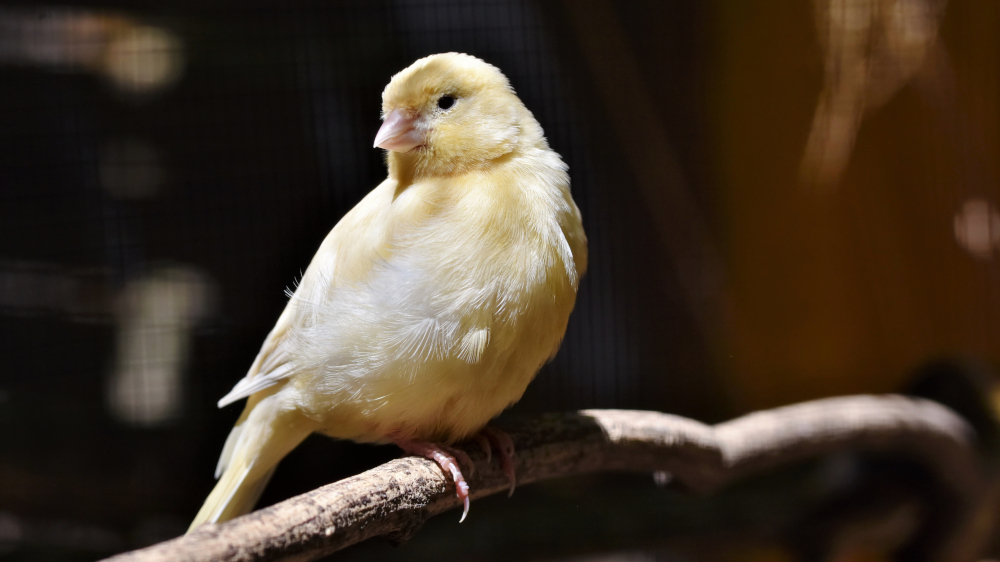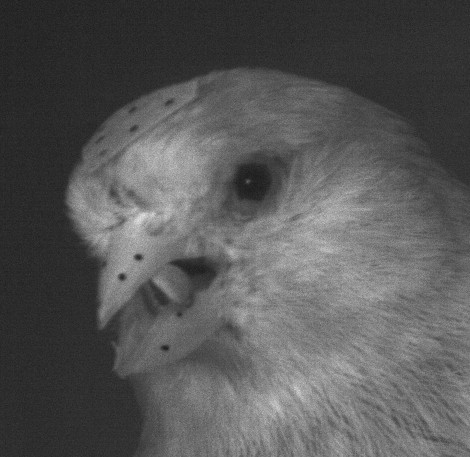Eating or being eaten? Seed cracking in canaries and why it's risky to eat calmly.
By Maja Mielke

Serinus canaria. Image by Ralph from Pixabay.
If you have a cat living outdoors, you will probably have experienced the sad incident that the cat caught a little songbird. Indeed, small birds, even when healthy and grown up, are never 100% secure from predation. But there are situations in a bird’s life that are more dangerous than others. One of these situations is feeding.
Why should feeding be dangerous? Many small songbirds are granivorous, which means they feed primarily on seeds. Often, these seeds are collected from the ground, which might require the birds to enter your cat’s territory. And during collecting, picking up, and processing the seeds from the ground, the bird’s attention is limited. Feeding takes time, attention and energy that cannot be used to look out for predators and the time to react when a cat is approaching might be limited. It could easily the bird’s last meal.
To make things even more dramatic, small songbirds still have to feed all the time to meet their high energy demands. These energy demands are so high because of their small body size, which goes hand in hand with a high metabolic rate in warm-blooded animals. A small songbird might easily need to take in up to 50% of its body weight every day.
So what can a granivorous songbird having a meal do to avoid ending up as a meal itself? One option is: mastering the seed cracking process as much as possible to ensure a sufficient energy intake and at the same time do not spend too much time on feeding. Since many seeds on the menu of granivorous songbirds have a hard shell that needs to be removed (dehusking), and the birds have no other tools than their beak to use, the skill of seed processing is not an easy one to master. But they are equipped with some extraordinary morphological and functional features. And exploring these features is what my PhD project is about.
So far, I have studied the seed cracking process in great detail in domestic canaries. After just publishing my first results in the Journal of Experimental Biology (https://doi.org/10.1242/jeb.244360) I want to use this blog post to summarize the main findings from my study.
I made high-speed recordings of canaries feeding on hemp seeds. High-speed is necessary, since the beak of the birds moves extremely fast (see below). If you have a canary at home, you will notice that it is hardly possible to see what’s going on with our bare eyes.
I did not use one, but four high-speed cameras at the same time. Filming with multiple cameras from different angles allows me to reconstruct the movement of upper and lower beak in 3D, which has never been done before in this species.
The processing of one hemp seeds usually includes the same five steps every time. 1) Picking up the seed 2) Positioning the seed in the beak 3) Cracking (attempt) 4) Removing the shell 5) Swallowing the inner part of the seed.
The positioning phase is an important one. During this phase, the seed is rotated by the tongue to bring it into the right position for a cracking attempt. The seed needs to be in an upright position with the natural margins of the shell properly aligned with the sharp edges of the beak. Only in this position the shell can be cracked open efficiently and without crushing the inner part of the seed, which would result in loosing parts of the energy-rich food source.
During the cracking attempt, the seeds is fixed in this upright position by the tongue and the ridges at the inner side of the beak. A cracking attempt can fail in two different ways. In the worst case the bird looses the seed, which requires starting all over again. But a cracking attempt might also fail just because the seed hardness, at least in the current position, exceeds the bite force of the bird. In that case, the bird might give up and drop the seed or it re-positions the seed to try again. Normally, the hungrier the bird, the more resolutely and patiently it will try to crack a seed once picked up. This can take more than 20 re-positioning attempts, which greatly prolongs the potentially dangerous feeding time.
During positioning, the canary performs highly repetitive cyclic movements with the beak which are the fastest of the whole feeding cycle. Believe it or not, during positioning the lower beak oscillates with a frequency of up to 25 Hz! That means up to 25 times per second (!) the lower beak goes up and down. That is 1,500 oscillations per minute! Try to chew a chewing gum as fast as possible! How many oscillations per minute can you reach?

Canary cracking a hemp seed (frame of high-speed recording). Image by Maja Mielke.
If the bird finally succeeds to crack the shell open, the next task is to gently remove the two hemispheres of the shell (“dehusking”). This is a delicate task. The shell needs to be removed efficiently while keeping hold of the seed’s core. And all this with only the beak as a tool!
I have observed that during feeding, but especially during biting and dehusking, the birds perform sophisticated 3D movements. While the skull anatomy of birds allows the upper beak to move only up and down, the lower beak can also be moved from left to right. And the birds make use of this ‘medio-lateral’ movement to increase the efficiency of interacting with the seed.
It has been a long way. At last the shell of the seed is removed. The core of the seed is sometimes polished a bit (once again removing small unwanted remains of the shell) and then finally swallowed. The whole process, despite being such a delicate task, takes a canary only a couple of seconds.
You will notice, feeding on seeds is quite a struggle for small songbirds. But they do quite an incredible job, being totally underestimated in their agility with the beak.
How can we help the birds? In two ways: 1) Install a bird feeder for songbirds in you garden or on your balcony. 2) Don’t forget to make the feeder cat-proof!
And you? While observing the birds feeding on your bird feeder, enjoy watching these little heroes and keep an eye on their beak movement. It’s so impressive!
Thanks for reading! If you have any questions or comments or just want so say hi, I will be happy to hear from you. Feel free to email me!